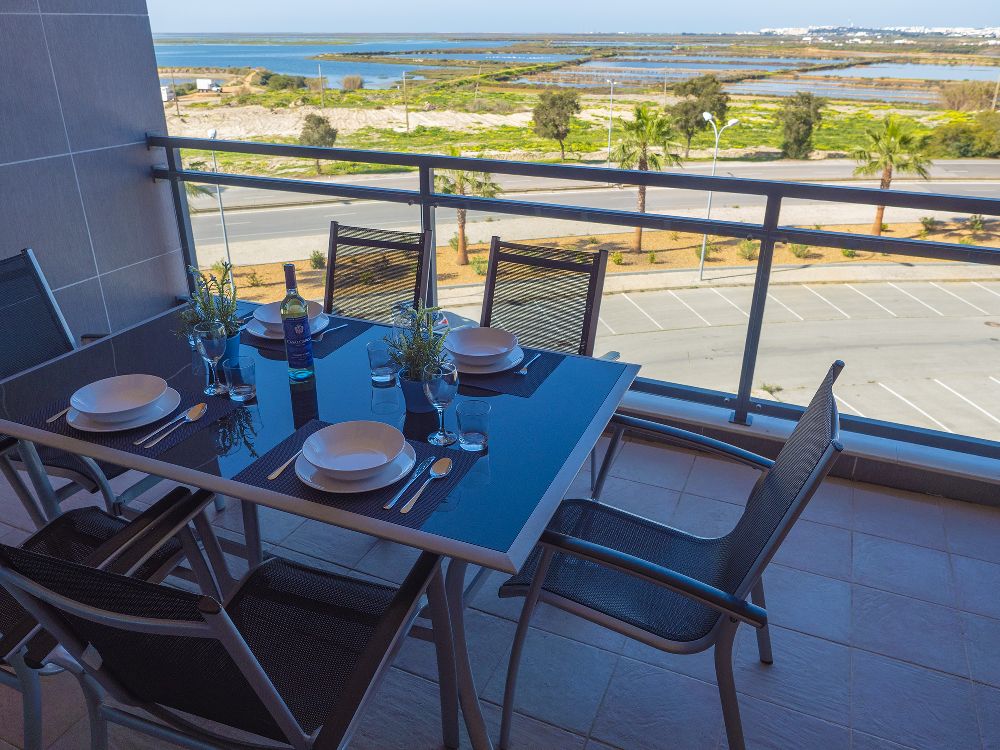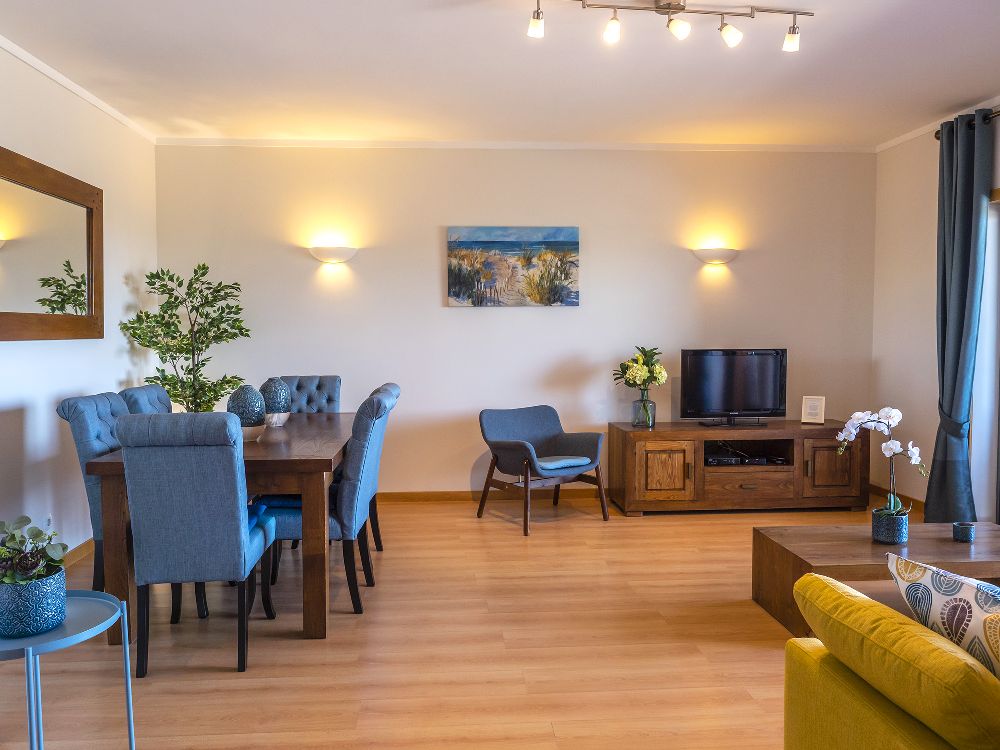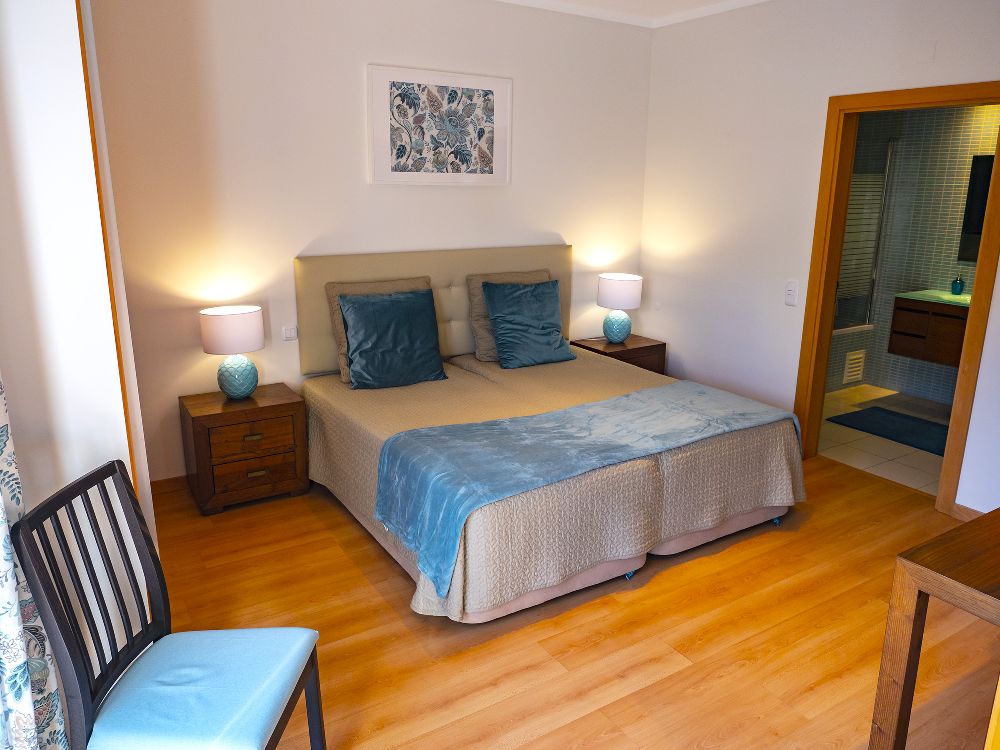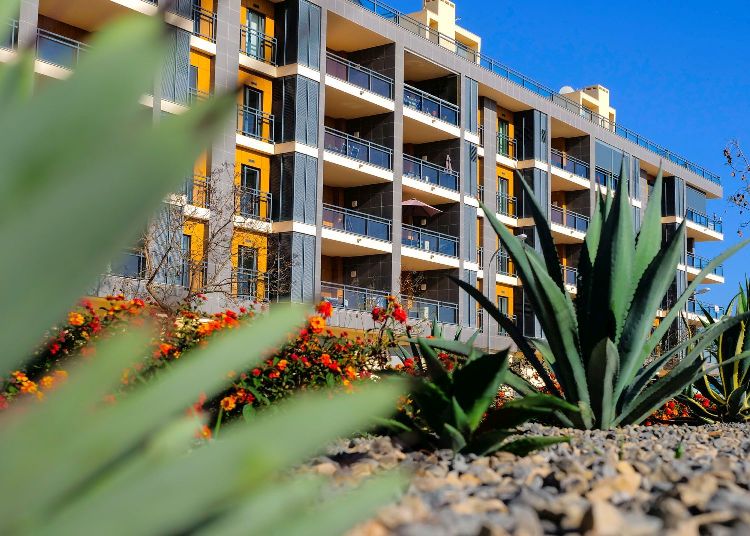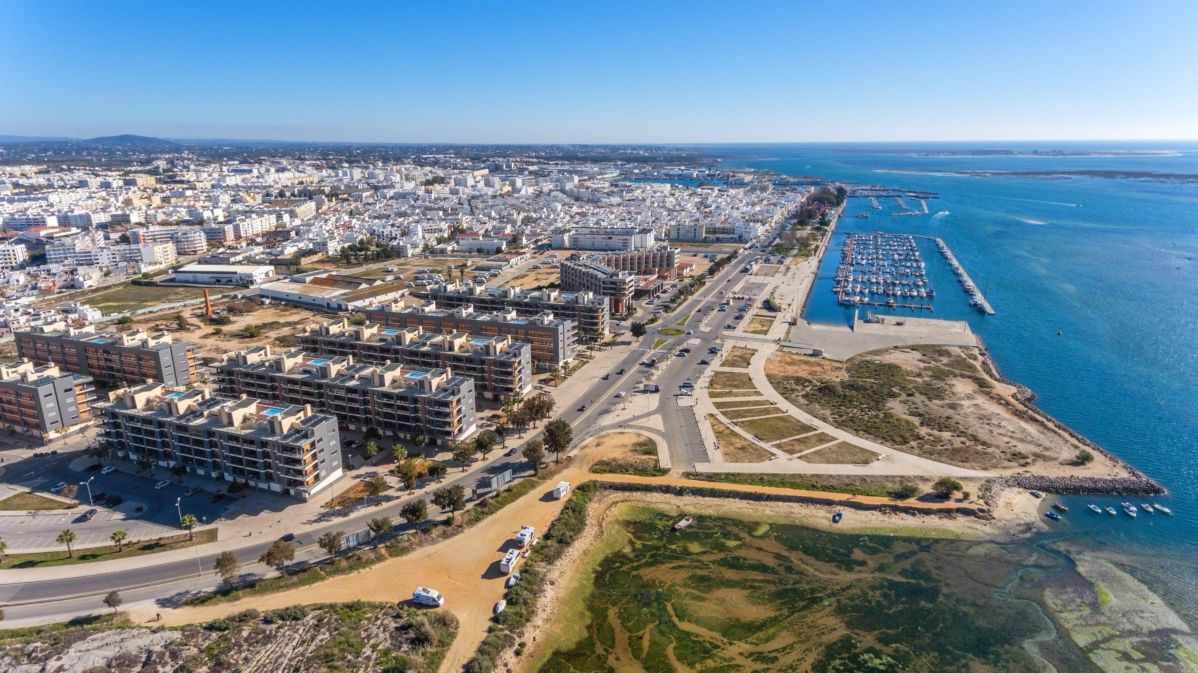The Eastern Algarve
The eastern part of the Algarve extends from Faro towards the Spanish border. There are beautiful white sandy beaches to be found, some directly on the mainland with a row of pine forests behind it; others on islets close to the coast with beautiful lagoons.
The atmosphere in the Algarve is rather North African than European. The Moorish influence cannot be overlooked. The Algarve offers much more than just beach entertainment. Its charm originates in the fishing and seaside resorts with their colorful boats, the shiny whitewashed houses with red tiled roofs and ornamental chimneys. Especially in the cozy coastal cities of Olhão and Tavira, the North African influence can still be clearly seen in the cube-shaped houses scattered across the countryside. Behind the coast are leafy fruit orchards and vineyards. Behind it, the fertile hilly landscape gradually turns into two ridges. Here you can find some typical Portuguese small villages and detached quintas (farm houses).
Faro
Faro, city with relaxed atmosphere
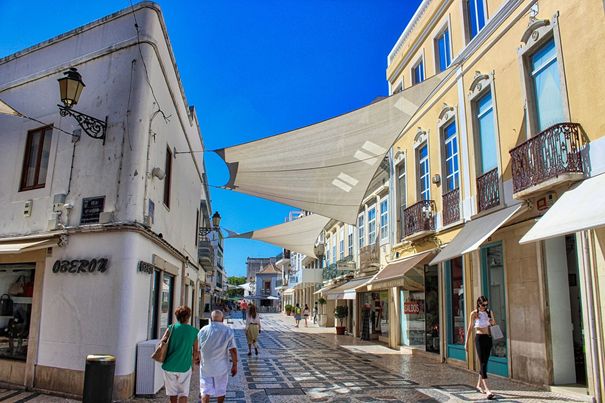
Faro decorated streets
Faro is a relatively small and charming city with beautiful buildings and atmospheric streets, without a long list of sights to tick off. The inhabitants know what hard work entails, but there is also plenty of opportunity for relaxation. This is evident, for example, from the amount of atmospheric restaurants, both in the old town and in the suburbs.
Rich history
One of the reasons to explore Faro are the traces you will find of its hugely rich history. Both in prehistoric times and in the times of the Roman Empire, Faro was a significant settlement. It was the Romans who built the port of the city.
In 1755, Faro like the rest of the Algarve was hit by a devastating earthquake. A year later, Faro was officially granted city rights and in the years that followed, the city was restored.
The old walled city centre (Cidade Velha) is the part with the greatest appeal. It starts with an imposing entry at the high city walls dating back to the Middle Ages.
In the past you could reach the old city via three entrances, one of which was Arco do Repouso. As soon as you walk under this arch, you take a step back in time.
Stroll through the streets with white houses at your leisure. Also, don’t forget to look up occasionally as you stroll the lively streets. You will see the nests of the many storks that live in Ria Formosa Natural Park, with the old parts of Faro offering enough high roofs to safely build a nest.
Sé de Faro
This Cathedral is one of the most important historical buildings in Faro. You will find it in the middle of the Largo da Sé square. The church is located in the old part of the city. The interior of the church is very Baroque. It displays many Portuguese tiles interspersed with gilded carvings. The church is highly decorated.
For a small fee you can view the cathedral (including the tower) from the inside. You then have a beautiful view of Faro from the first floor, so that’s definitely worth it! In the small museum of the cathedral you can view all kinds of liturgical utensils. It is a small exhibition with many gold and silver candlesticks and richly decorated robes.
City museum
In the Museu Municipal de Faro, located Largo Afonso III, nº 14, next to more contemporary objects of interest, a lot of Roman artifacts are on display, including a magnificent mosaic saved from the nearby ruins of a Roman villa located in Estoi.
Olhão
Moorish fisherman’s town

About 8 kilometers from Faro lies the fishing village of Olhão, a piece of North Africa in Europe. It is located on the natural reserve (Unesco World Heritage) Ria Formosa. The old town center, the Barreta district on the harbour side, looks like “Moorish”, although it was built in the eighteenth century. Olhão is probably the only urban area in Europe that was built entirely by Europeans with Moorish architectural influences.
Exploring the town
A good starting point for exploring town is the tower of Our Lady of the Rosary: the Baroque church in the center, at the beginning of an avenida. From here you can see hundreds of typical North African roof terraces on the roofs of the white-painted cubes, unique to this town. Take a stroll through the maze of streets and white houses in the picturesque fishing village district.
Olhão is a place for people who love authentic Portugal, with its history and culture, beautiful islands and beaches, natural reserve and beautiful hinterland. So for clubbers, bar lovers, etc. this is probably not the right holiday destination. We have lived in the Algarve ourselves for more than 13 years and think Olhão is one of the nicest towns along the coast. Many coastal towns mainly thrive on tourism, but Olhão still functions as the main fishing port of the Algarve. As a result, the town is lively all year round. Olhão still has its original character with strong Moorish influences.
The 1.3 km long promenade in Olhão, is one of the most beautiful in the entire Algarve, with green parks and a large children’s playground. The boulevard has completely been renovated in 2021. Striking are the famous red market halls with fresh fish, vegetables and fruits daily (except Sundays). On Saturdays there is a local products / gypsy market, where small private farmers from the area around Olhão gather to sell their seasonal goods and specialities. There are also many excellent cafes/coffee shops, shops, bars and restaurants. We recommend to try the unique ‘bica’ coffee (Portuguese style espresso) or a Galão (like a latte but stronger), and later a fresh orange juice from the very sweet seasonal oranges.
The choice of restaurants is large, but especially the very fresh fish, shells, cuttlefish, crabs and shrimps are excellent. On the promenade there are two berths for ferries to the islands of Armona, Culatra and Farol. One of them (especially for tourists) is located opposite the Real Marina Hotel & Spa; the other (public), a 10 minute walk from the apartment on the east side of the boulevard.
The center of Olhão is a pedestrian area with winding, cobbled streets, which open onto a beautiful avenida.
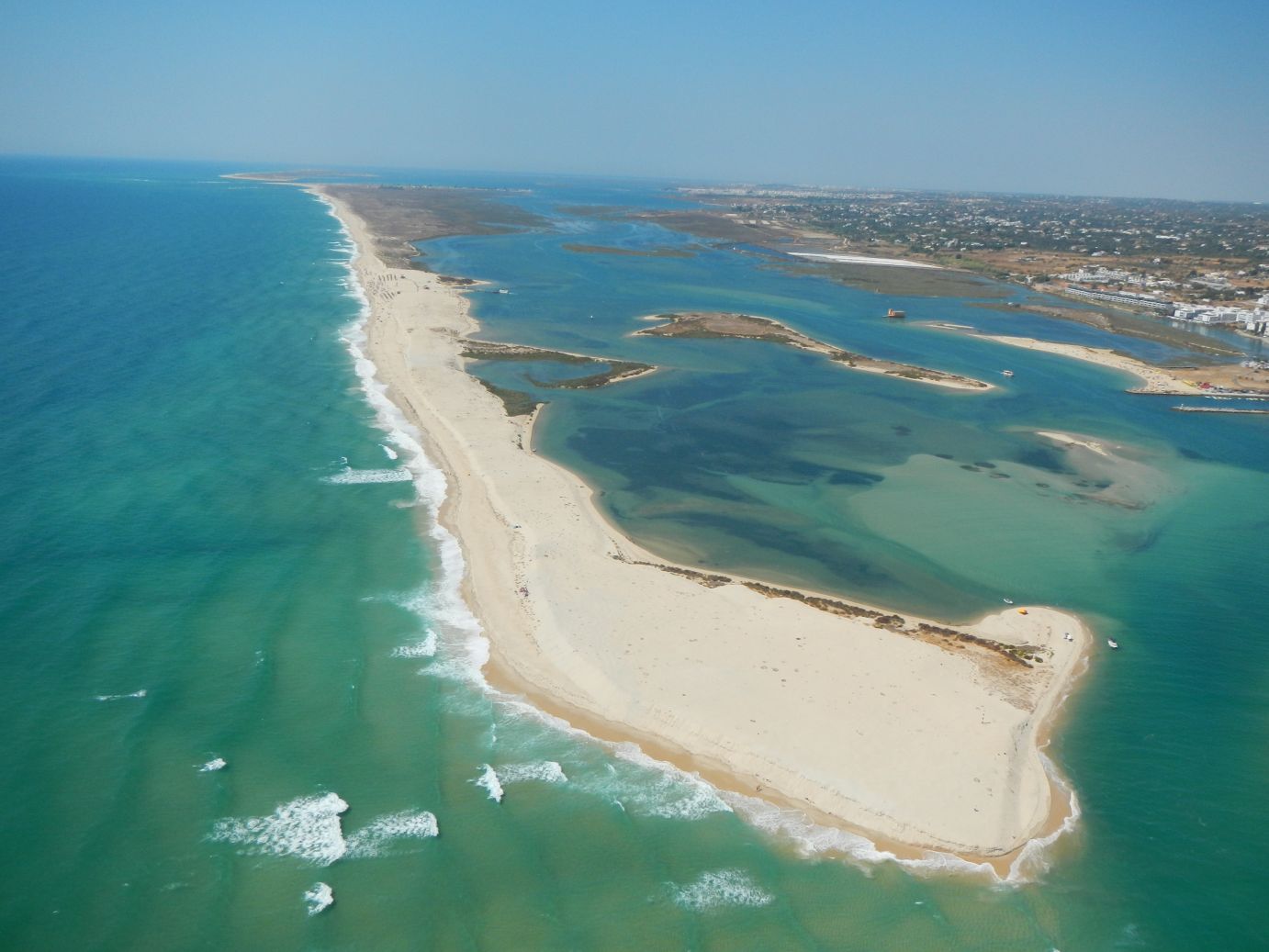
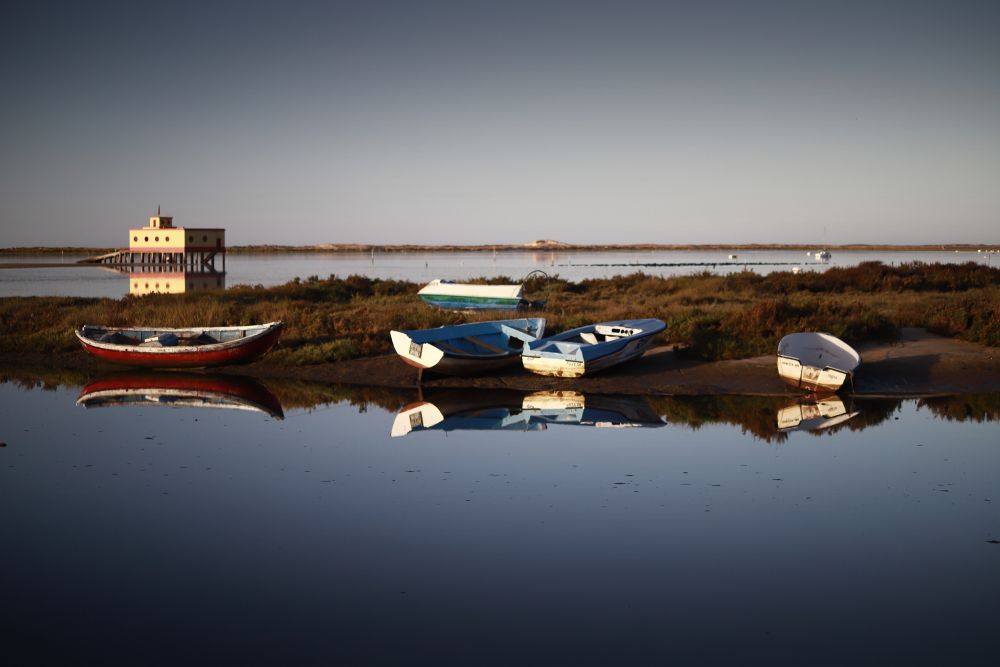
Moncarapacho
and the islands
About 18 kilometres (only half an hour by car) from Faro airport lies the sleepy town of Moncarapacho. A typical Portuguese town with some shops for daily groceries, but also a post office, banks, a petrol station, some small restaurants and a pottery (Olaria) with beautiful pottery. Orange, mandarin and lemon groves, almond trees, Carob trees, olive trees, pomegranate trees and other fruit trees define the lovely landscape in this area. Here you will find no industry and no mass tourism! From Moncarapacho it is only 8 kilometers to the closest beach in the town of Fuzeta.
You can go to the sandy laguna beach on the mainland, but also by an open ferry in a few minutes to the island (Ilha de Armona) located off the coast with fantastic, practically deserted pearly white sandy beaches. Fuzeta is also easy to reach by bike; there is hardly any height difference. On the beautiful expansive white sandy beaches of the Ilha de Armona you can enjoy peace and space to the fullest. Characteristic for this part of the Algarve is also the mild climate and the fertile soil. In the villages and hamlets, time seems to have stood still; tourists are rare and the Portuguese people are always friendly, helpful and welcoming
Fuzeta
Fuzeta is a dreamy village in the eastern Algarve, but residents and visitors know for sure to find the main square and the promenade. When the fishermen sleep during the day, it is quiet in the harbor a little further away from the square. Some fishermen repair their boats, barrels and lines. In the evening, they go out to sea. After returning in the morning, their catch is for sale in the covered market hall.
Castro Marim
On the natural border with Spain, the Guadiana River, lies the town of Castro Marim. Be sure to visit the medieval castle which towers high above the place. It used to be part of the Templars’ line of defense in the fight against the Moors. The castle is mirrored by a 18th century fortress which has never really been used due to the changing nature of warfare. Today you can enjoy the beautiful view of the river, neighboring Spain or the natural reserve with the salt pans from the castle walls or on one of the towers (located on every corner). The small cozy center of Castro Marim is also well worth your visit. Enjoy a delicious cup of coffee in one of those
Tavira
Tavira is one of the most beautiful towns in the Algarve. This beautiful village is located on the River Gilão. It is one of the few places in the eastern part of the Algarve that is well worth a longer stay.
Already in the 8th century BC there was a small settlement at this place on the river. The Phoenicians, the Romans and later the Moors also left their mark on this beautiful old town. In the 12th century the village was recaptured from the Moors. In the 18th century the city was at its peak. It became a center for the trade in dried fish and salt in the Algarve. However, the great earthquake that took place in the Algarve in 1755 also had its devastating effect on Tavira.
Today, the inhabitants of Tavira live mainly from tourism. The town has become a popular attraction for holidaymakers. Especially the part along the river is very beautiful. There is an ancient Roman bridge over the river. This bridge connects the two parts of the town. On either side of the river you will find beautiful old houses with the pointed roofs that are so characteristic of Tavira. You won’t find these anywhere else in the region. From the beautiful houses here along the water you can see that Tavira was once quite prosperous.
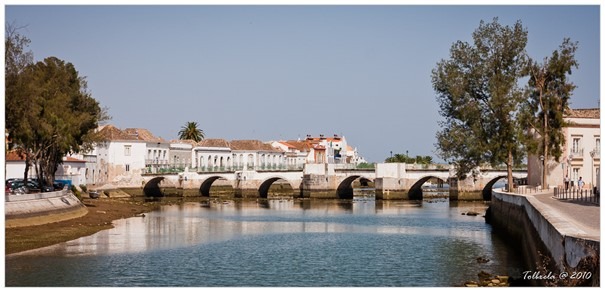
Further along in the city you will also find many sights. Tavira has nice little streets that wind their way past the white houses. The city has some beautiful churches like the Igreja Misericórdia. This church has special beautiful tile tableaux along the walls. It is one of the many churches in the city worth paying a visit. In addition, you can admire the remains of the old Moorish castle. Within the walls there is a beautiful garden that is full of nice exotic flowers in the spring. Sometimes on hot days there is a street musician who gives the beautiful garden even more atmosphere.
Vila Real de Santo António
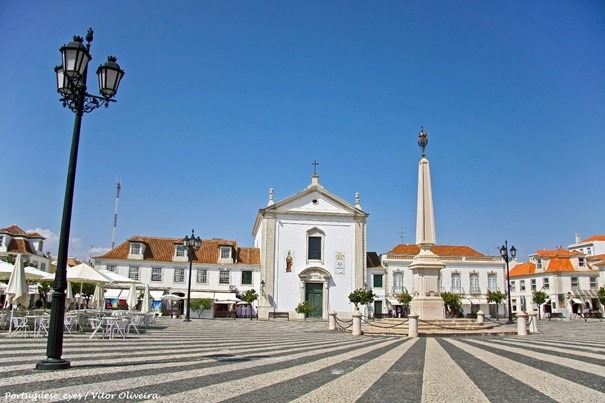
In the 16th century, probably a little closer to the sea, there was a town called Vila de Santo António de Arenilha, which was devoured by the sea and sand in the 18th century. It was important to control the access of the merchandise through the Guadiana, to royally supervise the fishing of Monte Gordo and to resist Spain, with whom Portugal was at war until 1762/63.The construction of Vila Real de Santo António thus had economic and political advantages and was more than just a royal wish.
The experience of rebuilding Lisbon after the earthquake of 1755 was gained and “rehearsed” in Vila Real de Santo António. First in the careful planning of a city structure and then by the use of sleek architectural models. And finally, the pre-manufacture of standard construction elements such as the “cantarias” (natural stone frames) that came from Lisbon by boat and were already ready for use.
To experience the planning of Vila Real de Santo António, one has to take a walk through the streets. Start at Praça Marquês de Pombal square, the heart of the town, with a beautiful natural stone look laid out around a 1776 obelisk. The square contains three of the most important urban features from the 18th century: the church, the town hall and the old police office (Casa da Guarda). After that, you need to go through some blocks, which were built on private initiative but still maintain the architectural style of the other blocks. Your walk could end at the old customs building (Alfândega), on the thriving banks of the Rio Guadiana River.

